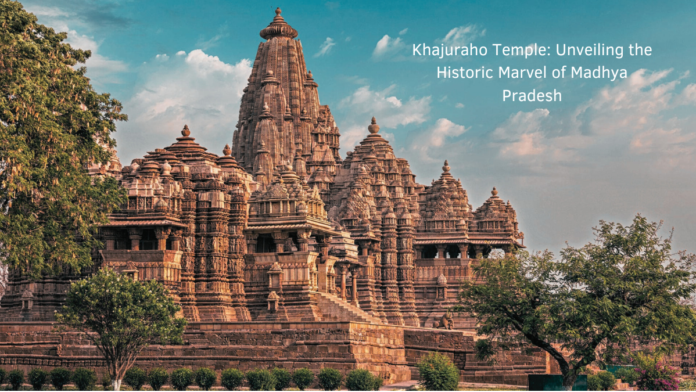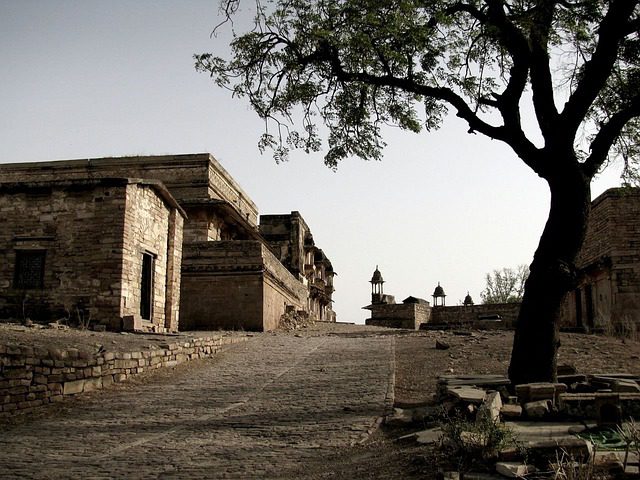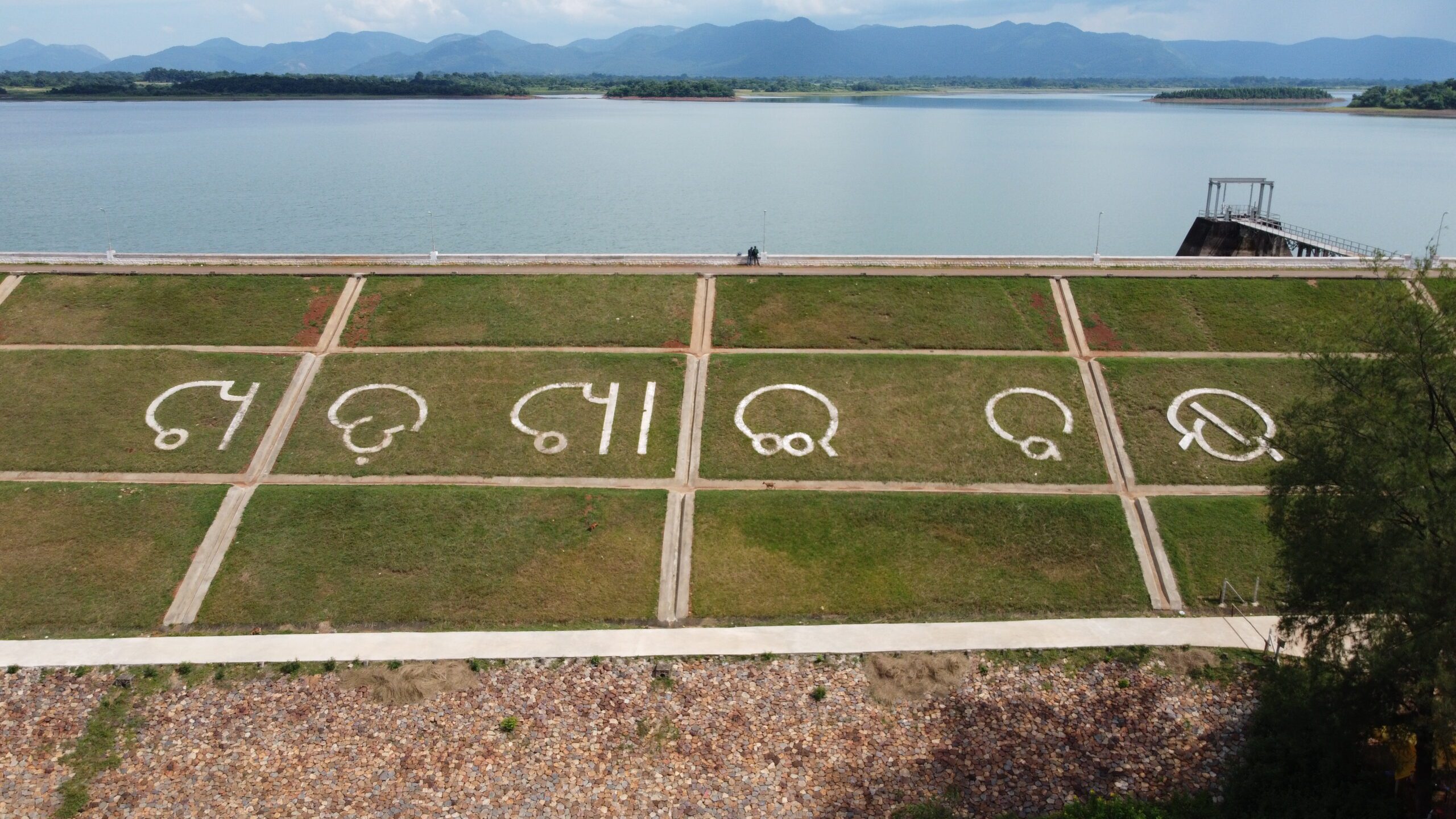Khajuraho Temple – Unveiling the Illustrious History of Madhya Pradesh’s Architectural Marvel
Khajuraho Temple: The Khajuraho Group of Monuments is a group of Hindu and Jain temples in Chhatarpur district, Madhya Pradesh, India. Located approximately 175 kilometers southeast of Jhansi, and in close proximity to Azad Nagar Khajwa (10km), Rajnagar (9km), and the district headquarters Chhatarpur (49km), lies a remarkable destination that has earned the prestigious title of a UNESCO World Heritage Site.
History Of Khajuraho Temple:
Renowned for their exquisite craftsmanship, these temples are distinguished by their intricate carvings and captivating sculptures, making them a true marvel to behold. The sculptures depict a variety of themes, including Hindu and Jain deities, erotic scenes, and everyday life.
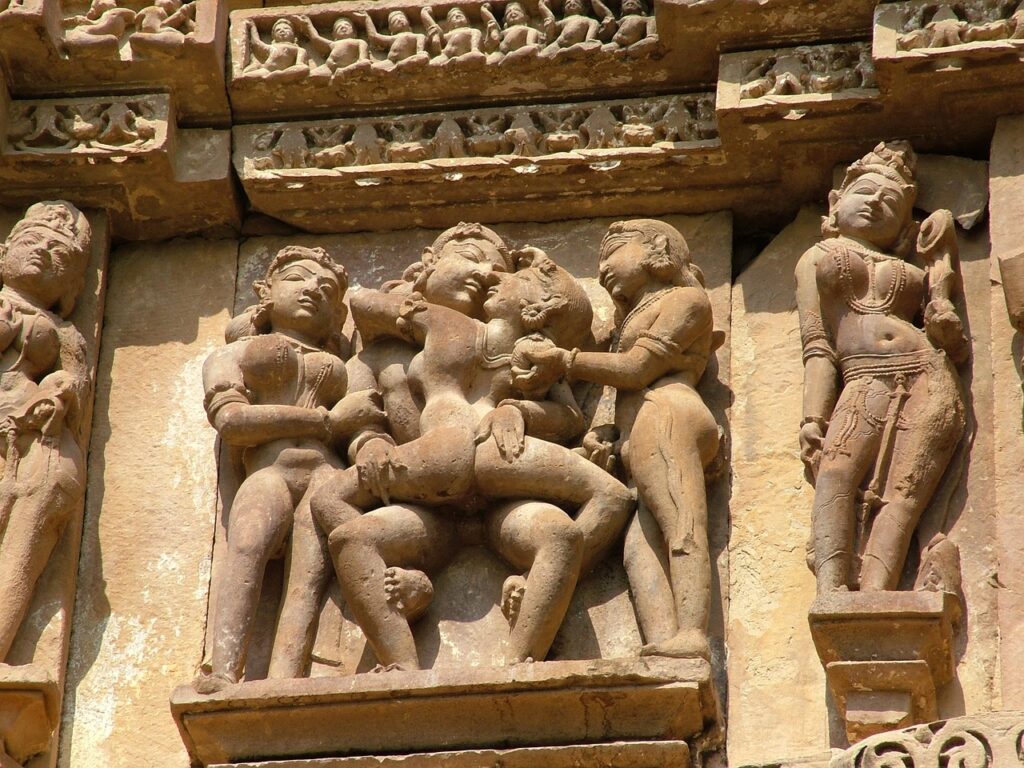
The erotic sculptures have made the temples famous around the world. However, the temples are also significant for their architectural beauty. The temples are built in the Nagara style of temple architecture, which is characterized by tall towers and curvilinear spires.
The Khajuraho temples are a UNESCO World Heritage Site because of their outstanding universal value. The temples are a unique example of medieval Hindu and Jain architecture, and they are a testament to the artistic and cultural achievements of the Chandella dynasty.
Here are some interesting facts about the Khajuraho temples:
- The temples were built over a period of about 200 years.
- There are over 85 temples in the Khajuraho complex, but only about 25 of them are still standing.
- The temples are made of sandstone, which was quarried from nearby hills.
- The temples are decorated with intricate carvings and sculptures.
- The erotic sculptures in the temples have made them famous around the world.
- The Khajuraho temples are a UNESCO World Heritage Site.
The Khajuraho temples are beautiful and historic sites. They are a testament to the artistic and cultural achievements of the Chandella dynasty. The temples are a popular tourist destination, and they are a must-see for anyone visiting India.
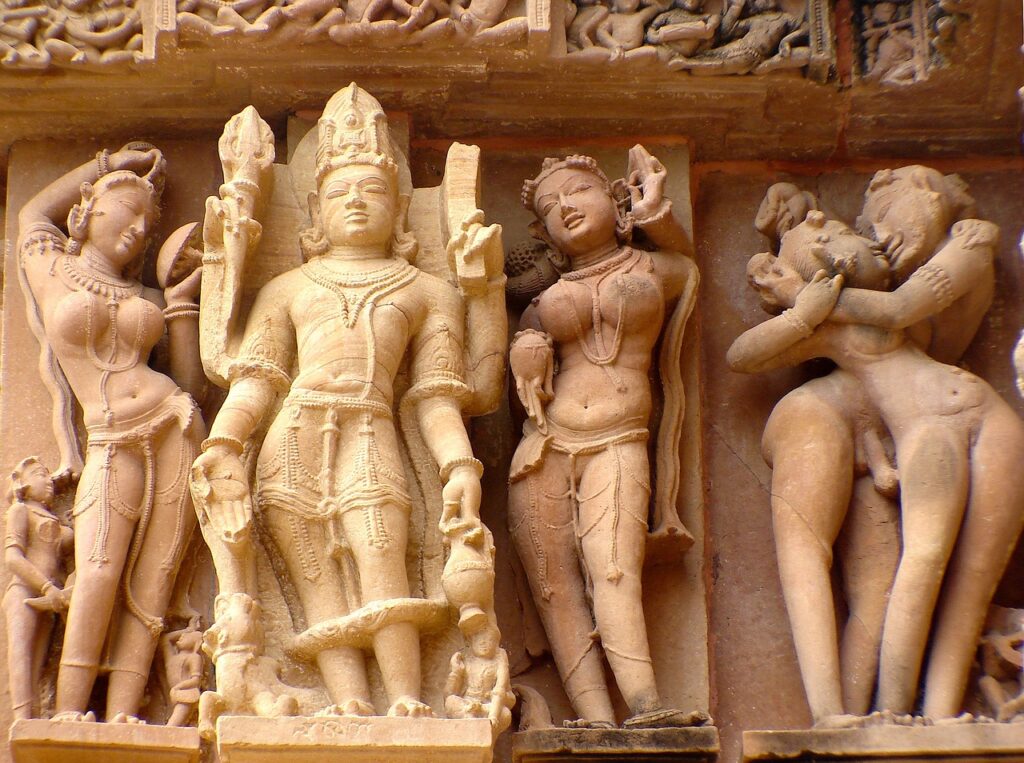
Exploring the Hindu Temples of Khajuraho
Chausath Yogini Temple:
Within the temple complex, there are 64 small chambers dedicated to the female yoginis of the deity Kali. It is on the basis of these chambers that the temple derives its name. Surprisingly, none of these 64 chambers contains any sculptures. This unique temple in Khajuraho is entirely made of granite and faces northeast and southwest. The temple originally had a total of 65 chambers, but now only 35 remain.
Kandariya Mahadev Temple:
The Kandariya Mahadev Temple holds the distinction of being the largest temple among all the temples in Khajuraho. Dating back to the 10th century AD, it stands tall at 109 feet in height and 60 feet in width. The walls of the Kandariya Mahadev Temple are adorned with approximately 900 sculptures, while the height of the statues ranges from 2.5 to 3 feet. Inside the sanctum sanctorum, there is a marble lingam, symbolizing the deity Lord Shiva.
Vamana Temple:
Constructed towards the end of the 11th century, the Vamana Temple in Khajuraho is dedicated to the dwarf incarnation of Lord Vishnu. Most of the major deities are depicted on the walls of the sanctum sanctorum. The temple showcases various forms of Lord Vishnu. It is a breathtakingly beautiful temple that evokes a profound sense of tranquility upon visiting.
Matangeshwar Temple:
An Active Spiritual Haven in Khajuraho” While most temples in Khajuraho have transformed into tourist attractions, the Matangeshwar Temple continues to be actively used for worship. Morning and afternoon rituals take place within its premises. The sanctum sanctorum houses a massive lingam, measuring approximately 8.5 feet in length.
Brahma Temple:
The Enigmatic Shrine by Khajuraho Lake Situated on the banks of the Khajuraho Lake, the Brahma Temple features a unique four-faced (chaturmukhi) deity within its sanctum sanctorum. Though it may likely represent Lord Shiva, the local worshippers consider it an image of Lord Brahma, hence the temple’s name. The garbhagriha (inner sanctum) and western windows exhibit sculptures of Lord Vishnu. This temple, crafted from both granite and sandstone, is believed to have been built around the 9th to 10th century.
Duladeo Temple:
A Shivite Marvel on the Outskirts Located about a mile and a half away from the main Khajuraho temples, the Duladeo Temple was primarily dedicated to the Shaiva sect. This temple stands at a height of 70 feet and has a width of 41 feet, featuring five chambers. It is believed to have been constructed around the 10th century.
So, when you visit Khajuraho, make sure to explore these magnificent temples. Don’t forget to share your experiences with us on our Facebook page.
If you found this article enjoyable, please share it and continue to be connected with our website, Gotravelblogger, for more similar articles.
RELATED ARTICLES: Pench National Park Detailed Information Madhya Pradesh Tourism

